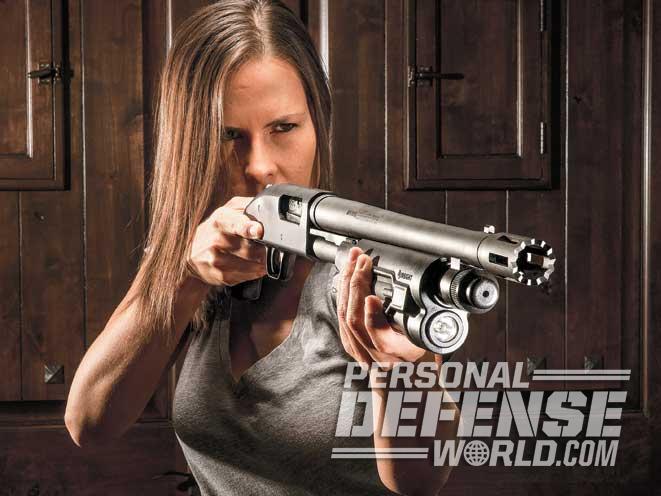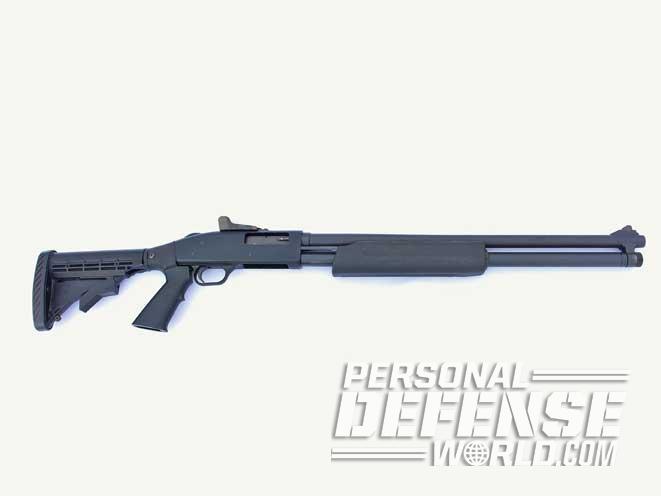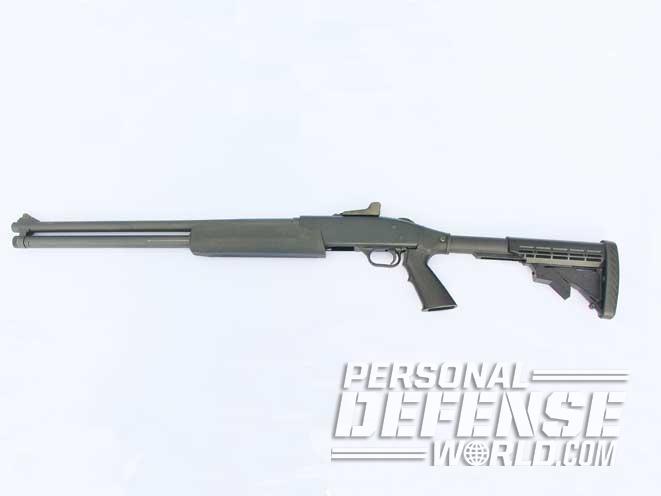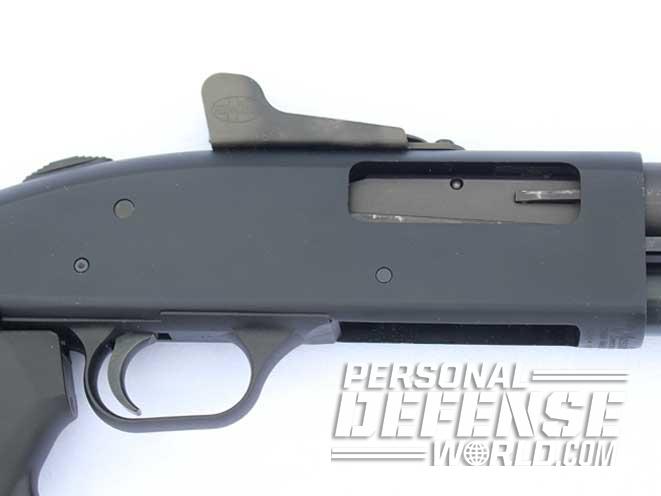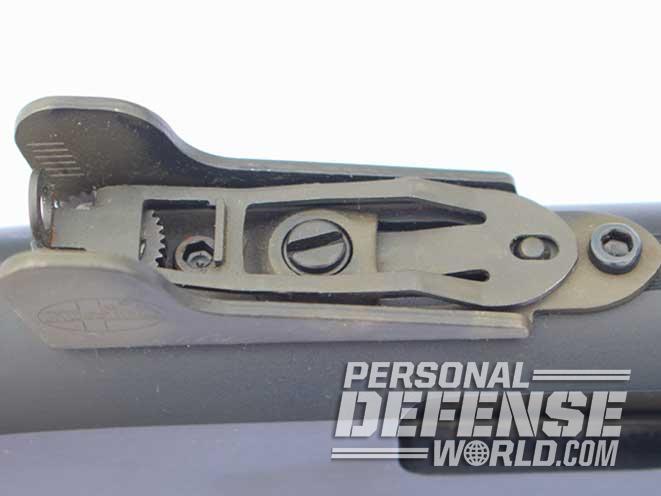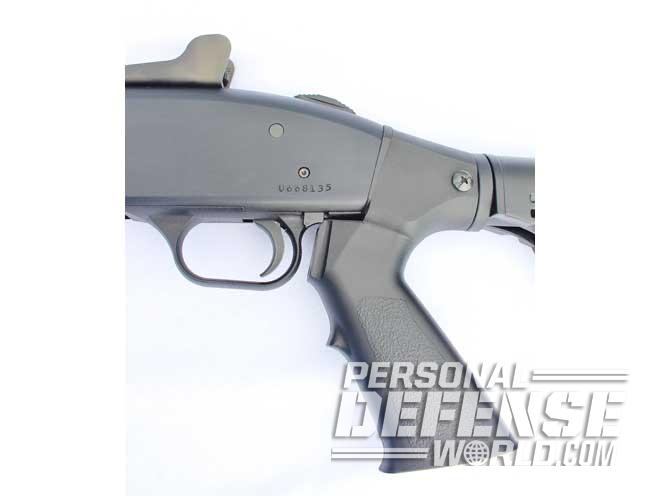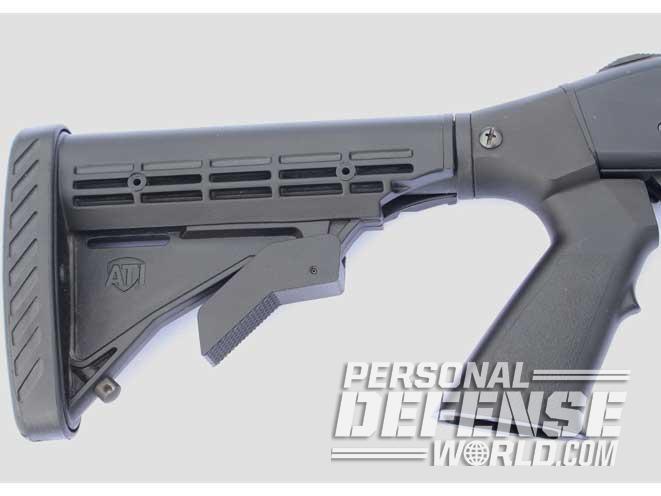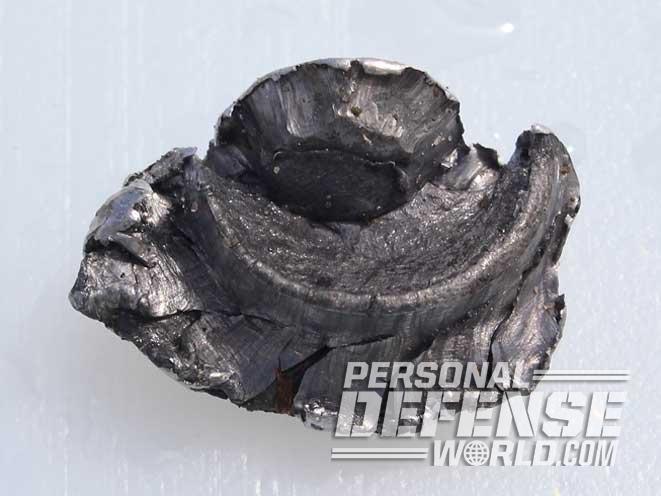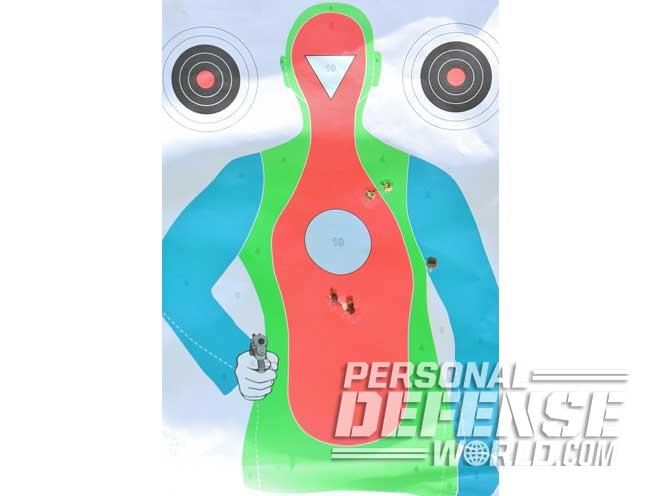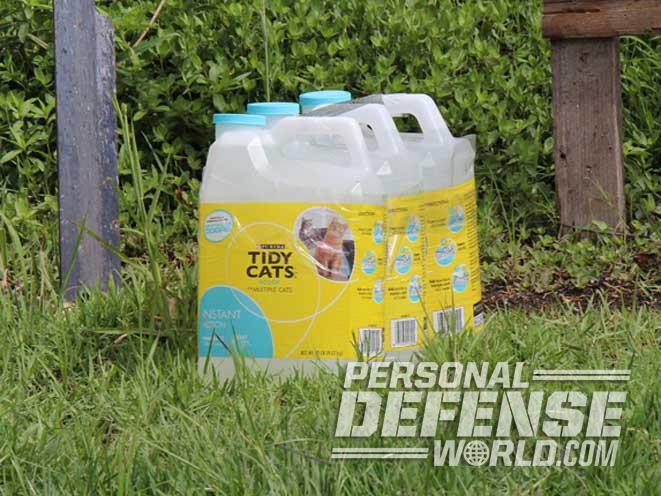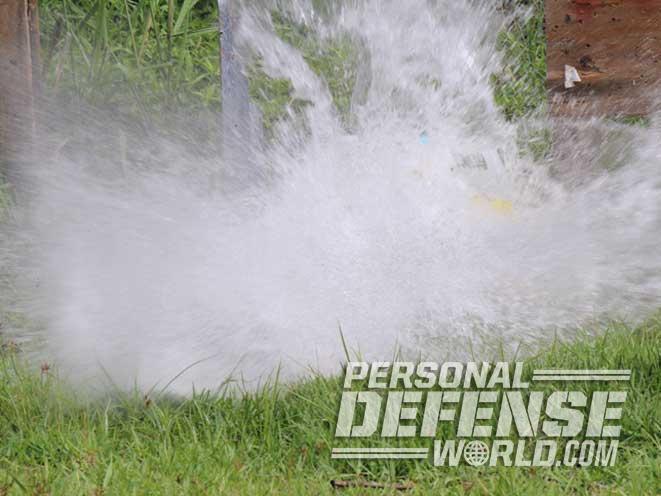Tactical shotguns are effective tools for home defense, but a 12 gauge may not be the best choice for many city dwellers. Recently, Mossberg and Remington have come out with tactical pump guns in 20 gauge, and for many people they’re a viable alternative to Grandpa’s 12 gauge “riot gun.”
A 20 gauge tactical shotgun has important advantages for urban dwellers, especially if they’re smaller in stature or are over 50 years of age. To begin with, 20 gauge defense loads have significantly less recoil than full-power 12 gauge loads. For example, a standard-velocity 20 gauge Remington Slugger rifled slug generates about half the recoil of a 12 gauge slug. Using a downloaded tactical 12 gauge slug reduces the recoil, but the 12 gauge still recoils more than most 20 gauge guns firing slugs.
When it comes to buckshot, low-velocity tactical 12 gauge buckshot loads kick about the same as 20 gauge buck, but only because 12 gauge tactical guns are often at least a pound heavier than most tactical 20s. In addition, the bigger and heavier 12 gauge gun doesn’t handle as well as a 20.
Advertisement — Continue Reading Below
Urban Advantage

When it comes to patterning, most 20 gauge tactical shotguns also tend to shoot denser and more even patterns at typical personal-defense distances than 12 gauges, provided both guns have the same degree of choke. The relatively narrow shot string produced by the 0.615-inch bore of the 20 gauge is one reason for its tight pattern. Another is the fact that 20 gauge buckshot loads often have a larger number of smaller pellets than 12 gauge loads. This larger number of pellets saturates the torso of a standard silhouette target better than a 12 gauge load of 00 buck. Twelve-gauge loads with 24 or 27 pellets of #4 buck do shoot fairly dense patterns, but #4 buckshot loads in 12 gauges are loaded to about 1,325-1,350 feet per second (fps) and generate at least 20 percent more recoil than their 20 gauge counterparts.
RELATED STORY: Top 7 Self-Defense Shotguns
Advertisement — Continue Reading Below
The 20 gauge’s final advantage is limited penetration. Each pellet of 00 buck in a 12 gauge load weighs about 53.8 grains and penetrates about 20 inches of 10-percent ballistic gelatin. Pellets of #2 buck in 3-inch 20 gauge loads weigh around 29.4 grains and penetrate about 16 inches, and pellets of #3 and #4 buck in 2¾-inch 20 gauge loads weigh 20.5 grains and penetrate about 14 to 15 inches.
Double-ought buck and non-segmenting slugs may be good choices for law enforcement agencies that need heavy projectiles to shoot at armed criminals who take cover behind barriers, but the average citizen living in the city rarely needs to shoot through barriers. He or she is often better served with projectiles that are more likely to stay within the target and are less likely to penetrate multiple interior walls and harm innocent bystanders. I’ve personally seen whitetail deer dropped at a distance of 20 yards by hunters using either #2 or #3 buck. It’s difficult to imagine any urban home-defense scenario that would involve shooting more than 20 yards.
Two companies currently offer 20 gauge tactical shotguns. Remington has a 20 gauge Model 870 Express Tactical pump action with a black synthetic stock. This gun has an 18.5-inch barrel, a fixed cylinder choke and a single bead front sight. The extended magazine holds seven 2.75-inch shells. Empty weight is 6 pounds.
Advertisement — Continue Reading Below

Mossberg makes six tactical 20 gauge shotguns. All are pump-action Model 500s that shoot 2¾- and 3-inch magnum shells. The major differences between the models are in the design and color of their synthetic stocks, the length of their extended magazines and the types of sights they have. All have fixed cylinder bore chokes.
Mossberg sent me a 20 gauge Model 500 Special Purpose with ghost ring sights and an ATI adjustable stock. I’ve used ATI-stocked 12 gauge Mossberg 500s before, and the ATI stock has a recoil pad that does a very good job of mitigating 12 gauge recoil. On the 20 gauge gun, this pad works even better.
RELATED STORY: 12 12-Gauge Home Defense Shotguns
Advertisement — Continue Reading Below
There are a number of good self-defense loads in 20 gauge. Most major manufacturers produce a 20 gauge slug load with a Foster-type slug. The weight of the slugs ranges from 5/8 ounces to 1 ounce. Most Foster slugs are generally made of soft lead and expand well in tissue.
Slugs have great stopping power, but buckshot may work better in urban areas because lightweight buckshot pellets tend to penetrate less than slugs. The exception is Winchester’s ¾-ounce Defender, which separates into three pieces after impacting the target. The Defender has a muzzle velocity of 1,600 fps and generates approximately 1,800 foot-pounds of muzzle energy, which is more than a .44 Mag.
There are a number of good 20 gauge buckshot loads. The most commonly produced one contains 20 pellets of #3 buck. Other buckshot loads include Rio’s nine-pellet load of #1 buck, Federal’s 3-inch magnum load with 18 #2 buck pellets and Federal’s Personal Defense load with 24 pellets of #4 buckshot. When used in high-density housing, the smaller buckshot sizes generally offer the least chance of overpenetration.
Advertisement — Continue Reading Below
Shots Fired
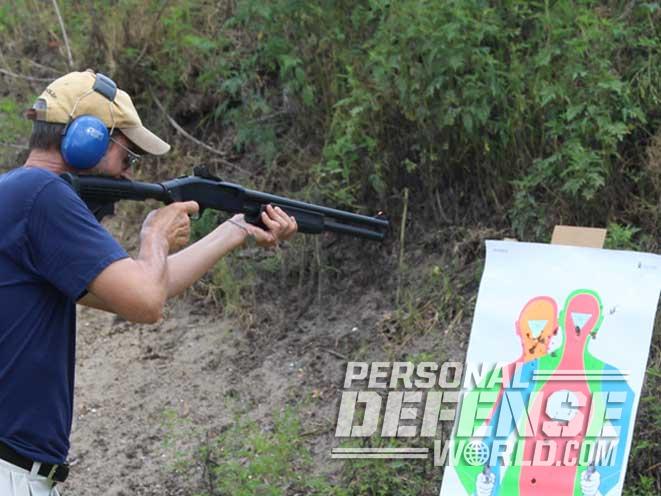
The Mossberg 500 Special Purpose 20 gauge was test fired at a private range. The gun was tested for reliability, handling, group size with slugs and pattern size with buckshot. Test loads included Winchester’s Defender ¾-ounce segmenting slug, Remington’s 2/3-ounce Slugger, Federal’s Premium 18-pellet load of #2 buckshot and Winchester’s #3 buckshot.
Advertisement — Continue Reading Below
RELATED STORY: 21 Rifles, Shotguns and Pistols For 3-Gun Competition
Slugs were tested for accuracy from the bench using a MTM Front Sight rifle rest to steady the gun. Given that the Mossberg is a tactical gun and this article focuses on close-range urban personal defense, the test distance for slugs was 20 yards and buckshot was tested for patterns at 10 and 15 yards. Slug tests involved firing two 5-shot groups with the Winchester Defender and Remington Slugger. The average group size for both slug loads was 4 inches. This is more than adequate for a torso shot at 20 yards. Three Remington Sluggers and two Winchester Defenders were then fired at a full-size silhouette target from a benchrest at a distance of 50 yards. This is a long distance for a smooth-bore gun with large-aperture ghost ring sights. Two of the Sluggers and the two Defenders struck the near the torso’s midline. One Slugger landed in the left arm. Overall, this was very good performance for a gun intended to be used at close-quarters distances.
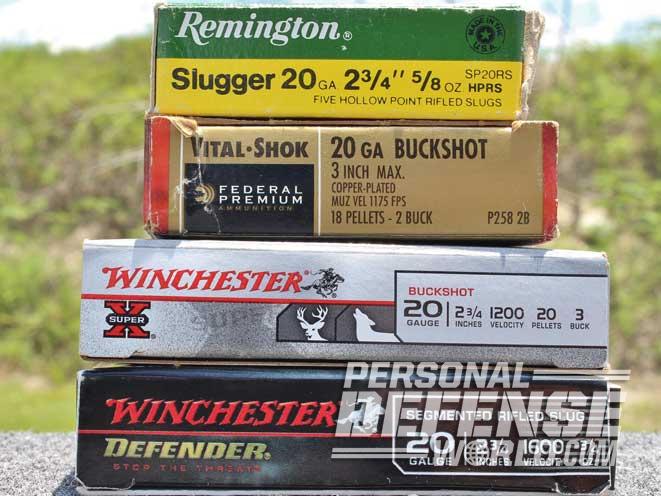
Advertisement — Continue Reading Below
The Defender slug is unusual because it is designed to fragment into three segments. Since it does not fragment until it hits the target, it eliminates the risk of collateral damage created by stray pellets. However, once it hits the target and segments, this projectile has the wound effect and limited penetration of three large pieces of buckshot. I fired the Defender into a target composed of three 3-gallon water jugs. The jugs were taped together and provided an 18-inch column of water that was separated by soft plastic jug walls at 6 inches and 12 inches. The slug struck the first jug, immediately separated into three pieces and dumped much of its energy in the first jug, which was blown wide open. Water sprayed about 2 feet in all directions. The three lead segments exited the first jug in a 3-inch group. In the second jug, the pattern of the three segments expanded from 3 to 12 inches. Two of the three segments entered the third jug and dropped to the bottom after travelling 16 inches. The Defender did exactly what it was designed to do.
RELATED STORY: Shotguns – 12 Gauge Home Defenders
At 10 yards, two shots of Winchester #3 buck produced a 7-by-9-inch group in the center of the torso. The Federal magnum placed two shots of #2 buck into a 9-by-10-inch group at 10 yards. The pattern was again centered in the torso. At 15 yards, the pattern for two shots of the Winchester load increased to 10.5-by-13 inches, and two shots of the Federal load produced an 18-by-17-inch pattern. Each 15-yard target had one pellet that missed the silhouette. Given this, it’s important to pattern a shotgun with the buckshot load to be used for self-defense. Limiting shots to the distance at which all of the pellets reliably hit the torso of the silhouette will help prevent collateral damage. With this particular gun firing these two loads, that distance is 35 to 40 feet, which is a lot longer than most rooms in most urban homes.
Advertisement — Continue Reading Below
All things considered, a 20 gauge tactical shotgun is a viable alternative to a 12 gauge for urban home defense. Depending on who you are and where you live, it may actually be a better choice.
For more information, visit http://www.mossberg.com or call 203-230-5300.
